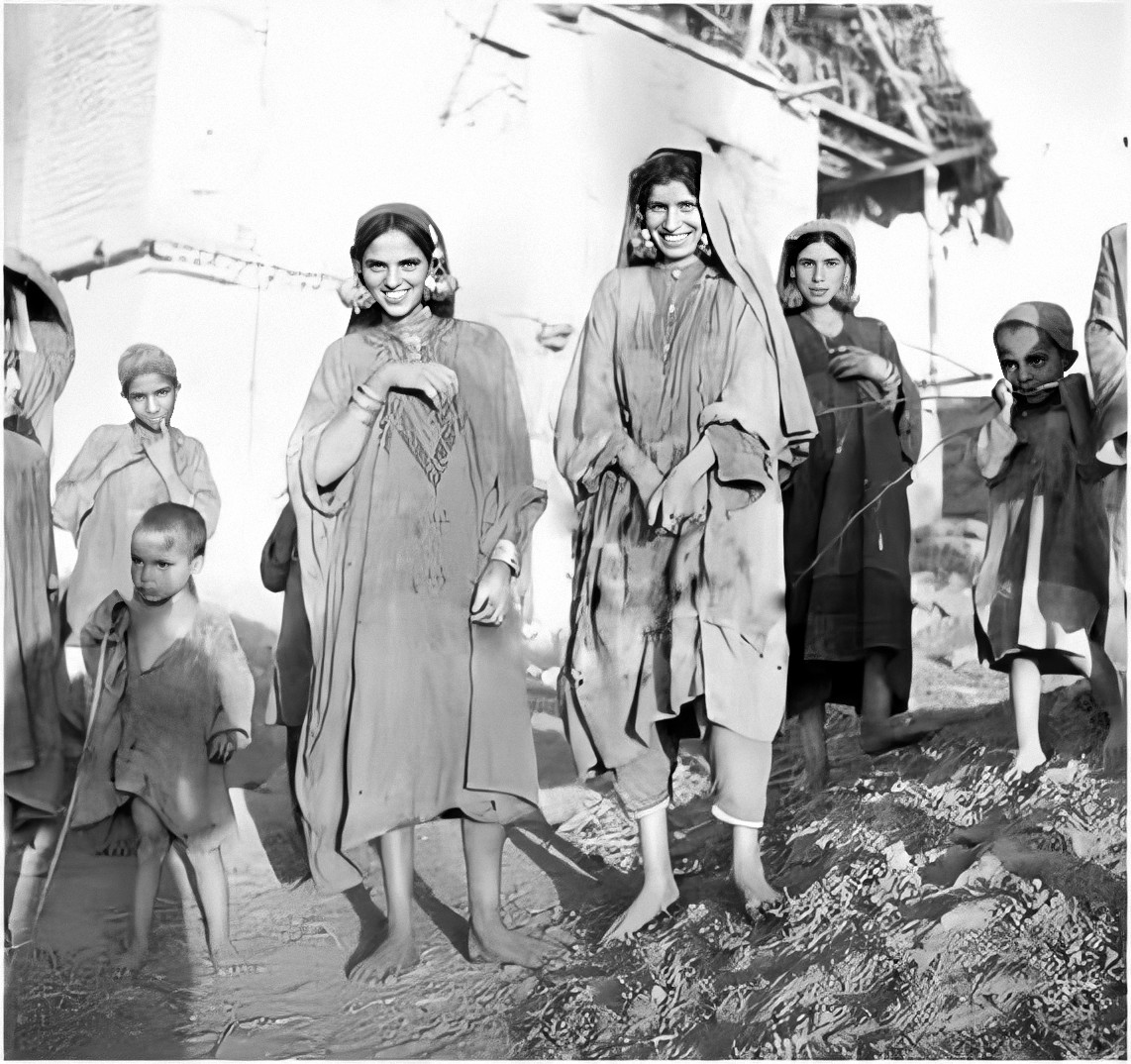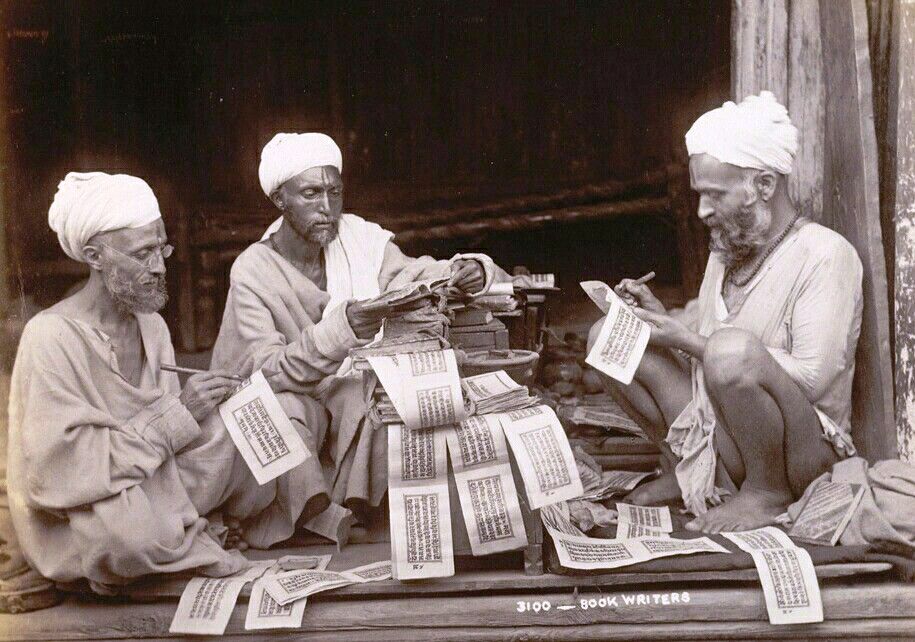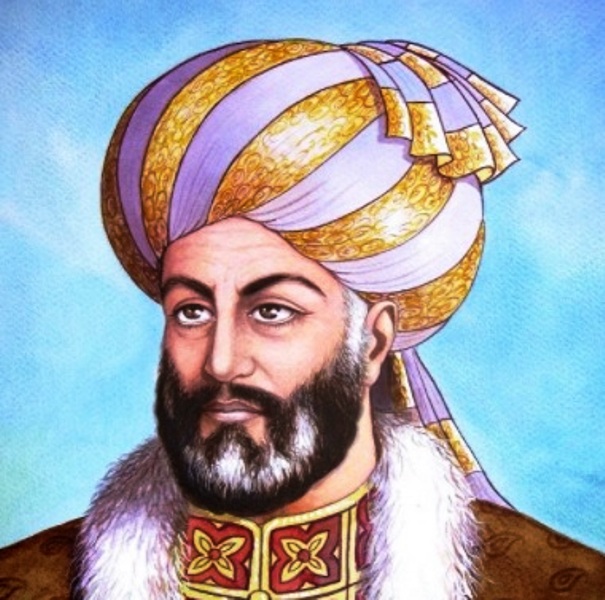Fierce resistance to the Afghan rule in Kashmir was led by a Punjab born Gujarati who adopted Kashmir and Kashmiris and eventually died for it. Read Ajmal Khan Khatak on the rise and fall of Raja Sukh Jiwan Mal, who ruled Kashmir for more than eight years till Ahmad Shah Abdali got him trampled under an elephant

Originally appointed as deputy governor by Ishaq Aqasi (1733), Khwaja Abdullah Khan Kabuli reigned in Kashmir for four months. During his rule, Kashmiris’ were relaxed to some extent because he was a kind hearted, intelligent and just ruler.
Khwaja Abdullah Khan was assisted by Sukh Jiwan Mal, a powerful bureaucrat appointed as chief secretary by the first Afghan governor, Abdullah Ishaq Aqasi.
Sukh Jewan was a Khatri Hindu born in Bhera, West Punjab. Some writers, however, believe he was born in Gujarat. As an educated youth with fair complexion and handsome features, he entered the services of Shah Wali Khan, the prime minister of Ahmad Shah Abdali, during the Afghan occupation of Punjab in 1732 as an accountant.
After Abdali’s conquest of Kashmir, he was deputed to the valley to run the office of Abdullah Khan Ishaq Aqasi in 1753. He was appointed chief secretary and adviser by Ishaq to assist his successor Khwaja Abdullah Khan Kabuli the same year. It was within two years of his service with the Afghan establishment in Punjab and Kashmir that he shot to prominence.
Sukh Jiwan had his own designs to gain power in Kashmir and had hatched a well-planned conspiracy against Khwaja Abdullah Khan Kabul, with the help of a Kashmir notable, Abul Hassan Bandey. As a result, Khwaja Abdullah Khan Kabuli was assassinated along with his two sons in the last quarter of 1753. Sukh Jiwan Mal replaced him.
A Murderous Start
In Sukh Jiwan, Kashmir found a good administrator and custodian of the rights of the people. Hailing from Bhera, Punjab, Sukh Jiwan rose to prominence in the service of an Afghan wazir, Shah Wali Khan, when he was appointed as an accountant. Earlier, Sukh Jiwan was in the service of Sardar Jahan Khan, commander of the Afghan forces at Peshawar. He was appointed chief secretary and adviser to Khwaja Abdullah Khan Kabul, the Afghan deputy in Kashmir, by Abdul Jan Khan Ishaq Aqasi in 1753.
During Abdullah Khan Kabuli’s four months rule, when he was his adviser, Raja Sukh Jiwan engaged himself in winning over the people and exploiting the hatred, which had spread throughout Kashmir against the oppressive Afghan rule. Therefore, when he became the self-proclaimed governor, people were happy with the change. They enthusiastically backed Sukh Jinan Mal and enlisted themselves in thousands for his army.

After taking over, he appointed Abul Hassan Bandey as his chief minister and minister for revenue and law. When the news of new development in Kashmir reached the court of Ahmad Shah Abdali, it was taken as a rebellion. However, it was the time when the Afgan king was deadly busy in his military campaigns against the Persian and Mughal forces. He was not in a position to open another front in Kashmir. So he reluctantly let Sukh Jiwan continue. The only step the wise king took was confirmation of Sukh Jiwan Mal as his viceroy and appointment of an Afghan elite Khwaja Kijak to work under him as deputy.
A Huge Demand
Another message of the Afghan King to follow was the demand of a large sum of money from the revenues of Kashmir to meet the expenses of the royal military expeditions in various war campaigns. The royal demand amounted to several crores of rupees, which was, according to instructions contained in the message, to be collected from the Kashmiri’s by any measures fair or foul.
Sukh Jiwan Mal was still pondering on the issue and was about to issue orders in this regard when the Kashmiris revolted against the new administration. They did not allow a single penny to go to the treasury of the Afghan king. One of the pillars of the triangular structure of power in Kashmir, Abul Hassan Bandey, as the head of the rebels, demanded Sukh Jiwan to refuse the payment of revenue and oust Khwaja Kijak and his aides, Malik Hassan Khan Irani, Azam Khan and Mira Khan. Sukh Jiwan was naturally on the side of Kashmiris.
Khwaja Kijak and his group of around 2000 warriors, took up arms and a battle broke out between the rivals, at Baramulla, in which the forces of Kijak were defeated by the Kashmiris. While Kijak, Malik Hassan Khan Irani and Azam Khan were expelled, RK Parmu has written (A History of Muslim Rule in Kashmir) that Kijak’s three “ring leaders” were also killed. “Sukh Jiwan Mal declared the secession of Kashmir from the kingdom of Afghans and proclaimed the sovereignty of the Mughal emperor of Delhi,” according to Parmu. “The latest situation enraged Ahmad Shah Abdali and, in retaliation, he deputed Abdullah Khan Ishaq Aqasi, once again, at the head of a formidable force of 30000 troops, to punish the Kashmiris in his own way.”
A New War
Abdullah Khan Ishaq Aqasi marched into Kashmir in mid-winter of 1754. His troops were ambushed by the defense forces of Sukh Jiwan in (Hyderabad) Poonch, The climate did not favour the Afghans. Hatred in the hearts of Kashmiris against the Afghans, in general, and Ishaq Aqasi, in particular, went a long way in favouring Sukh Jiwan.
PNK Bamzai gives the account of the fierce battle of Poonch:

An 1864 photograph taken by Samuel Bourne shows the ‘First Bridge’ of Srinagar with the Palace in its background. The (Sherghari) Palace uses Burza roof. The photo is part of British Library collections.
“The Afghans chose a wrong season for the attack. In mid-winter when the passes lay under twenty feet of snow, the Afghans were goaded into action. The result of the battle was a foregone conclusion. Sukh Jiwan Mal, at the head of his determined thought poorly equipped Kashmiri army, delivered a massive assault and the benumbed Afghans were completely annihilated. Those who survived the bullets and swords of the Kashmiris were taken prisoners and sent in humiliating costumes to the city to be jeered at by the victorious Kashmiris.”
Hassan and Fauq, while giving details of the march of the prisoners of war streets of Srinagar, tell that their heads were covered with paper caps. Ishaq Aqasi, however, spared himself from death.
A Famine
By next year, an untimely snowfall destroying the crops, following the invasion of swarms of locusts. A severe famine paralysed Kashmir.
Sukh Jiwan’s chief minister, Abul Hassan took immediate steps to give relief to the people. Two lakh Kharwars (one Kharwar is 80 kgs) of grain were distributed among the people as taqawi loans. People were provided with ration sufficing for their six months requirements. These loans were never recovered from the people and were finally written off by Colonel Mihan Singh in 1834.
Meanwhile, Ahmad Shah Abdali freed his old ally Mir Muqim Kanth from the prison and sent him to Kashmir with a mission to break the alliance of Sukh Jiwan and Banday. Perhaps he had come to know that a nation that could not be subdued by the sword, could easily be subjugated by conspiracy and therefore he had planned to “cut the diamond with the help of a diamond.”
The same year a fire broke out in Srinagar, which, apart from destroying state arms and ammunition dump, also devastated hundreds of houses and took a heavy toll on lives. Meanwhile, Kanth had been successful in his mission to create misunderstandings between Sukh Jiwan and Bandey.
A Dismissal
In 17S7, Bandey was dismissed, disgraced and imprisoned on the false charges of attempting to kill Sukh Jiwan. Though Bandey tried his best to remove the misunderstanding, but it seemed that Kanth had well-implemented his plan. Alter putting Bandey behind the bars, his assets were forfeited and a ransom of rupees one lakh was charged from his family.
Kanth was his natural replacement but he could not retain his position for too long. It was only after one year that his conspiracy was brought to light and he was treated with the same treatment as was met out to Bandey. Sukh Jiwan now-imprisoned Kanth and reinstated Bandey in his court.
Expansion
In 1758, the Marathas were advancing in the plains of Punjab, pushing the Afghan forces across the Indus river and the Afghan power in Punjab was touching a low ebb. Taking benefit of the situation. Sukh Jiwan planned an attack on the neighbouring principalities of Sialkot, Bhimber and Rajouri. He raised an army of 10000 men and attacked Sialkot. The Afghan governor, Yar Khan, repulsed the attack with the help of Raja Ranjit Dev of Jammu.

A failed expedition cast shadows over the fate of Kashmir. Soon after the Sukh Jawan retreat, the Bambas of Jhelum valley revolted against his authority and attacked the northern districts of Kashmir. However, Bandey was successful in crushing the attacking forces in the absence of Sukh Jiwan.
On his return from the Bambas campaign, it was Banday’s own turn to raise arms against Sukh Jiwan. After hearing the news of his defeat on the Sialkot front, Banday established his forces on the right bank of the river and raised the banner of revolt. Sukh Jiwan, however, suppressed the rebellion, and, after the defeat, Bandey, fled away to Poonch where he died the same year (1758).
A Pandit Rises
However, the ongoing scuffle between the groups of Kanth and Bandey paved the way for the rise of another noble Pandit Mahanand Dhar, who was appointed chief minister by Sukh Jiwan in 1758.
When Dhar assumed office as chief minister, rapid changes began to take place in the administration. Sukh Jiwan’s all decisions were influenced by Dhar and he gave up his secular exposure with the introduction of laws banning the Gaokushi (slaughter for the cow, considered sacred by Hindus) and Azan (call for the prayers of Muslims) in Kashmir.

Jai Lal Kilam. author of The History of Kashmiri Pandits denies these accusations made by Muslim historians and claims that Pandit Mahanand Dhar was popular among the Muslims. However, he does not deny the banning of the slaughter of cows and call for prayer during Dhar’s premiership.
Offering details of Sukh Jiwan’s “second blunder”, Parmu has written that he changed his secular policy and acted like a “bigoted Hindu” banned “Azan and cow slaughter” and thereby offered a direct affront to Muslim sentiments. The Muslim soldiery objected and rebelled. but Sukh Jewan’s troops put them down.
The incident of Muslim revolt was not an uprising but a snipping. At midnight, when Raja Sukh Jiwan was sleeping, a prince from Balkh, with the help of Agha Hussain and a small group, entered his house and attacked him with a dagger. The Raja received a minor injury on his back. The snipers also plundered a part of the city. They were, however, caught red-handed and killed on the spot.
Regaining Kashmir
In the meantime, Ahmad Shan Abdali had gone back to Lahore after his victorious battle against the Marathas at Panipat in 1761. He had the leisure to give some attention to Kashmir. After consultations with his close aides, the Afghan monarch deputed one of his celebrated generals Nooruddin Bamzai, and placing a force of 30000 Afghan warriors under his command, the King ordered him to move towards Kashmir in order to punish Sukh Jiwan.
The Afghan army marched into Kashmir and after being reinforced with the assistance of Ranjit Dev, the Raja of Jammu, they crossed Tosamaidan Pass, and camped at a lower plateau below Tosamaidan.
Sukh Jiwan, at the head of 60000 troops, set out to defend his territory. Both the armies met at Chera Udar where a fierce battle broke out between the two rivals. Bamzai puts the number of the Kashmiri troops under the Raja at 40000 men.
When the fighting began, at the very outset, a large portion of Sukh Jiwan’s army deserted under the command of his commander-in-chief, Bakht Mal, and joined the ranks of his enemies. This development was a sharp blow for Sukh Jiwan. The battle was shortly ended with the decisive victory of the Afghan army.

A Torturous Death
Raja Sukh Jiwan Mal was taken prisoner and sent to Lahore in a blinded condition. On Abdali’s orders, he was trampled to death by an elephant in 1762, after ruling Kashmir for eight years, four months and eight days. Thus ended the “transitional period” of the history of Kashmir, and Sukh Jiwan Mal faded away leaving behind many memories, legends and traditions.
Termed by historians to be a man of great abilities, being simultaneously, a poet, writer, scholar, soldier and statesman. However, he lacked the qualities of tactfulness. Mostly he suffered for his steadfastness, for he had taken wrong steps at inappropriate times, by accepting the suzerainty of Alamgir –II (1754), by trusting blindly in the person of Mir Muqim Kanth (1757) and by giving up his secular policy on the advice of narrow-minded Pandit Mahanand Dhar (1759).
A Remarkable Era
Sukh Jiwan’s rule in Kashmir was, however, a remarkable period. He used to regularly feed the poor from his own kitchen and attended the Friday congregations and Eid prayers in Jama Masjid Srinagar before being influenced by Pandit Dhar in 1709. He also held regular meetings and conversations with scholars, including Muslim ulema, and sponsored gatherings of poets (mushairas) at his residence.
On the night when a fire broke out in Srinagar, he was busy in a live dialogue with the Muslim ulema on some issues raised by Imam Bokhari in his collection. His most commendable contribution was assigning a project to write a history of Kashmir in verse in a group of writers and seven celebrated poets.
The poets were Mohammad Ali Khan Mateen, Abdul Wahab Shaiq, Mohammad Jan Beg Sami, Mulla Mohammad Taufiq, Rehmatullah and Navid Hassan. He used to award one rupee for each couplet, and during his life, Mulla Toufiq had composed two thousand, Shaiq six thousand and Sami one thousand couplets. Earlier, Mulla Hamidullah had written a Kashmiri short drama, based on a dialogue between Sukh Jiwan and his wife.
His era between the first conquest of Kashmir by Abdullah Khan Ishaq Aqasi in 1752 to the second victory of Nooriddin Bamzai in 1762, can be termed as a period of transition. During this decade neither the Afghans could establish their administration in Kashmir nor the emperor of Delhi could claim to regain it. The only revenue which went from Kashmir to the Kabul treasury was the amount of hundred lakh rupees collected by the Ishaq Aqasi in 1752-53 through his plunder. It was only after the second conquest of Kashmir in 1762, that the Afghans really subjugated Kashmir and effectively annexed it to Kabul.
(The write up is the edited version of a long excerpt from Khatak’s doctoral thesis Kashmir Under The Afghans (1752-1819) that he submitted to the University of Peshawar in 1993.)















